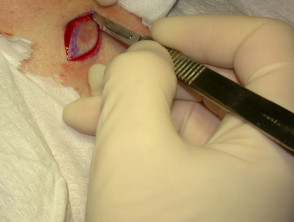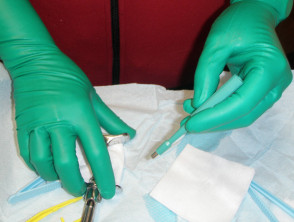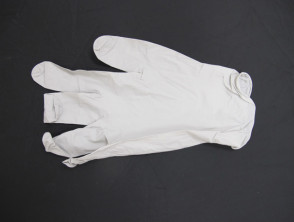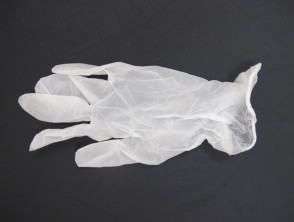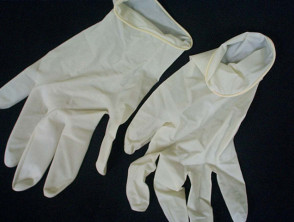Introduction
The primary purpose of surgical gloves is to act as a protective barrier to prevent the possible transmission of diseases between healthcare professionals and patients during surgical procedures.
Differences between surgical gloves and medical examination gloves (the type of gloves found in bulk containers in clinical examination rooms) are:
- Manufacturers of surgical gloves are required to meet a higher level of quality standards
- Surgical gloves are sterile and individually packaged in pairs
- Surgical gloves have a more precise range of sizing than medical examination gloves.
Medical examination gloves help prevent contamination between caregivers and patients. These gloves are used during procedures that do not require sterile conditions, for example drawing blood for a blood test. Some of these gloves can also protect the wearer from harm caused by dangerous chemicals or pharmaceuticals.
Surgical gloves
Materials
Natural rubber latex surgical gloves were first used in 1890. Their usage increased dramatically in the late 1980s when latex gloves were widely recommended to prevent transmission of blood-borne infections, such as the human immunodeficiency virus (HIV).
The incidence of allergic reactions to latex began to rise rapidly among patients and health care workers in the 1990s. Since then, new synthetic glove materials have been introduced, which have different properties with regards to strength, comfort and sensitivity. However, the majority of surgical gloves are still made from latex.
| Material | Natural/synthetic | Pros | Cons |
|---|---|---|---|
| Latex | Natural |
|
|
| Neoprene | Synthetic |
|
|
| Polyisoprene | Synthetic |
|
|
| Nitrile | Synthetic |
|
|
Medical examination gloves are often made of latex or synthetic materials such as nitrile or vinyl (PVC). Vinyl gloves are less durable and provide weaker chemical protection than other glove materials, so they are not suitable for healthcare workers in direct contact with bodily excretions or those who handle chemotherapy drugs.
Examination gloves used in healthcare
Elements other than the glove material that determine the level of barrier protection include:
- Length of time the glove is worn
- Chemicals coming into contact with the glove
- Handling of equipment that may stress the glove material
- The fit of the glove; poorly fitting gloves offer less protection.
Latex allergy and other skin reactions from surgical gloves
- Irritant contact dermatitis — the gloves, chemicals used in glove manufacture, glove powder or sweat may have a direct irritant action on hands as a result of mechanical disruption of the skin due to the rubbing of gloves; it is not due to an allergic reaction.
- Allergic contact dermatitis — often due to an allergy to rubber accelerators (chemicals used in the manufacturing of rubber). Can also be due to other glove chemicals such as preservatives, colourants, and other additives.
- Latex allergy — Due to allergy to natural rubber latex protein.
How to avoid skin irritation from surgical gloves
- Non-powdered gloves are less irritating and drying than powdered gloves. FDA rules to ban powdered surgeon's gloves, powdered patient examination gloves, and absorbable powder for lubricating a surgeon's glove, take effect in the USA in January 2017.
- If wearing occlusive gloves for more than 20 minutes, use well-fitting cotton gloves beneath them to reduce irritation caused by sweating
- It is important that hands are washed thoroughly after glove removal
- Practice a consistent hand care regimen
